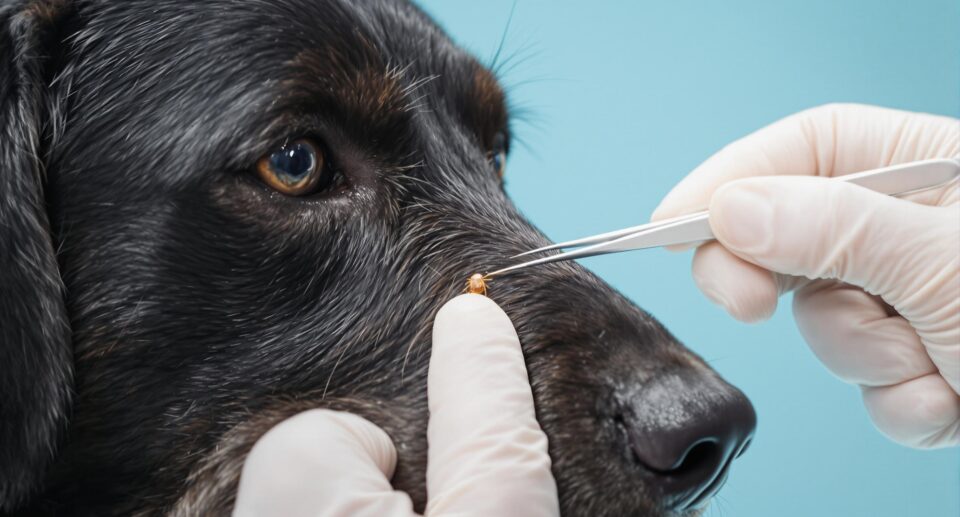What To Do If You See A Tick On Your Dog

Ticks are eight-legged pests that can be as small as a sesame seed and swell up as big as a blueberry after a blood meal. When a tick latches onto your pet, there’s a chance they may spread Lyme disease, an infection that causes fever, fatigue, swollen joints, and sometimes, kidney failure.
Over the past decade, Lyme disease in dogs has been on the rise, even in states that were previously considered low-risk. In recognition of Prevent Lyme Disease in Dogs Month, learn what to do if you find a tick on your pet.
How To Remove A Tick On Your Pet
As soon as you notice a tick on your dog or cat, it’s best to remove it right away. The longer a tick is attached, the higher a chance it has of transmitting a disease to your pet.
A tick latches onto its host by using its mouthparts to break the skin, secreting a chemical in their saliva that causes numbness. Then, they burrow a straw-like feeding tube into the skin that they will use to feed off the host’s blood.
Ticks can stay in place for days. Some have a barbed feeding tube that keeps them firmly attached, or their salivary glands may contain a substance that hardens like cement.
To remove a tick on your pet:
- Sterilize a pair of tweezers or a tick removal tool with rubbing alcohol.
- Use your tool to carefully grasp the tick as close to your pet’s skin as possible.
- Pull tick straight up to release mouthparts from skin.
- Dispose of or contain tick for future testing or identification.
- Clean the affected area of skin with rubbing alcohol.
- Wash your hands thoroughly with soap and water.
When removing a tick, you’ll need to take care to completely remove their mouthparts from your pet’s skin. Parts that remain embedded can cause infection. To do this, make sure you’re grasping the tick as close to the head as possible, rather than squeezing the body and pulling.
During removal, it’s possible for the tick to regurgitate its stomach contents into your pet’s bloodstream. This can increase your pet’s chances of contracting disease. To prevent regurgitation, do not coat the tick in nail polish, rubbing alcohol, or any other substance, and do not burn, squeeze, or squash the tick’s body.
What To Do With A Tick After Removal
Once removed, the tick will likely still be alive, and could bite again if released.
You can kill a tick by wrapping it in tape or dropping it into a jar filled with rubbing alcohol.
If you’d like to preserve the tick in case you may need to have it tested, you can keep it alive in a plastic baggie with a damp cotton ball to keep it from drying out, or you can store a dead tick in your freezer.
Should My Pet Go To The Vet After A Tick Bite?
Once you successfully remove a tick from your pet, it’s usually not necessary to see their veterinarian right away. If you’re unable to remove the tick safely on your own, though, you should see a vet as soon as possible.
Though tick-borne illnesses in pets are on the rise, it’s still relatively uncommon for a tick bite to result in disease. A tick must be attached to its host for at least 24 hours to transmit bacteria or viruses.
Cats and dogs are not as susceptible to Lyme disease and other tick borne illnesses as humans. Up to 90% of dogs that do contract Lyme disease will never develop symptoms.
Following a tick bite, watch for symptoms of Lyme disease like lethargy, fever, appetite changes, and lameness. Symptoms can take weeks to months to appear. If your pet does show symptoms after a bite, see a veterinarian for treatment, which will include antibiotics and other medications as needed to manage symptoms.
VISION
Every pet deserves to live a long, happy, healthy life.





